How To Fix US/DS Light Blinking? [Reasons & Fixes]

The US DS lights on your WiFi gateway indicate upstream and downstream status. If you find them blinking, it means that your device is having an issue connecting to the internet. It may be caused by a service disruption, ISP maintenance, or some other reasons that I’ll discuss below.
The most effective way to fix this is to power cycle your internet equipment. To do so, unplug the power and ethernet cables, wait for a minute, and reconnect. However, if this doesn’t work, keep reading to know potential causes and further solutions.
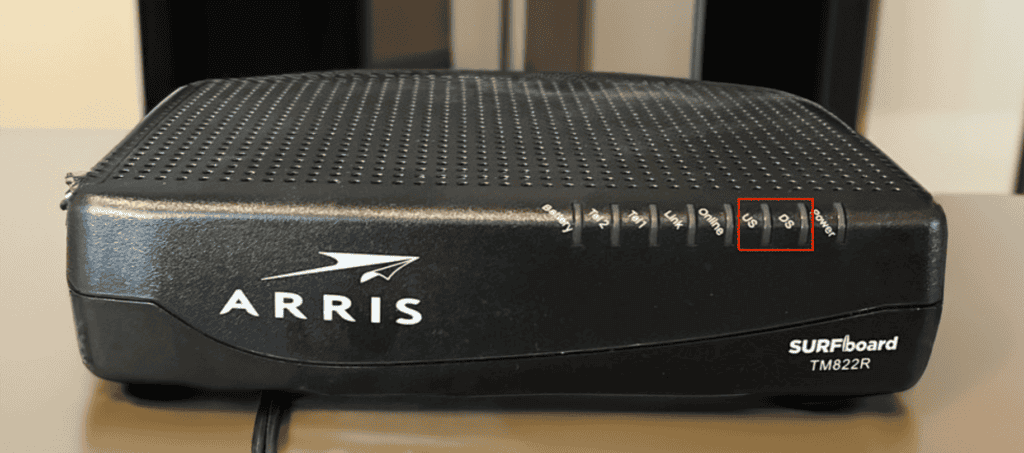
Reasons Behind a Blinking US/DS Light & Ways To Fix It
- Your cables or coaxial splitter are loose or damaged.
- The firmware on your router is not up to date.
- Your router is overloaded or overheated.
- Your device is configured incorrectly.
- Your device has turned faulty/bad.
It’s time to troubleshoot your connection. Follow the solutions given below in the same order for faster resolution.
1. Check for Service Outages or Maintenance
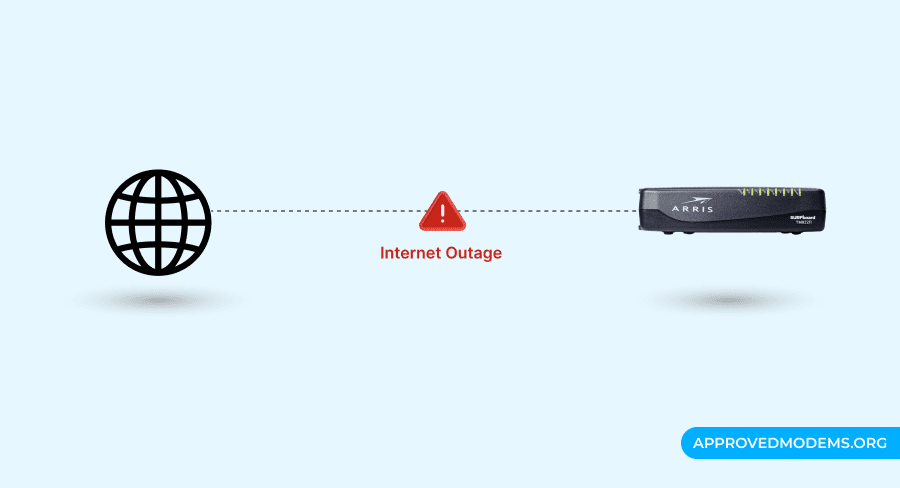
The internet connection issue might not be specific to you but to the whole community. Make sure to check if the blinking light results from the outage before frustratingly going through other troubleshooting methods.
- If you suspect such, check your mobile app or ISP portal. Put in your postal address to find your locality, and you should get the necessary updates.
- If any scheduled system maintenance is going on, the provider should brief you about it beforehand.
- You can ask your neighbors about it, or the best would be to call your local provider.
- If there’s an internet outage in your area, I’d suggest you stay patient and wait for the providers to get your connection back on track.
2. Check for Loose or Damaged Connections
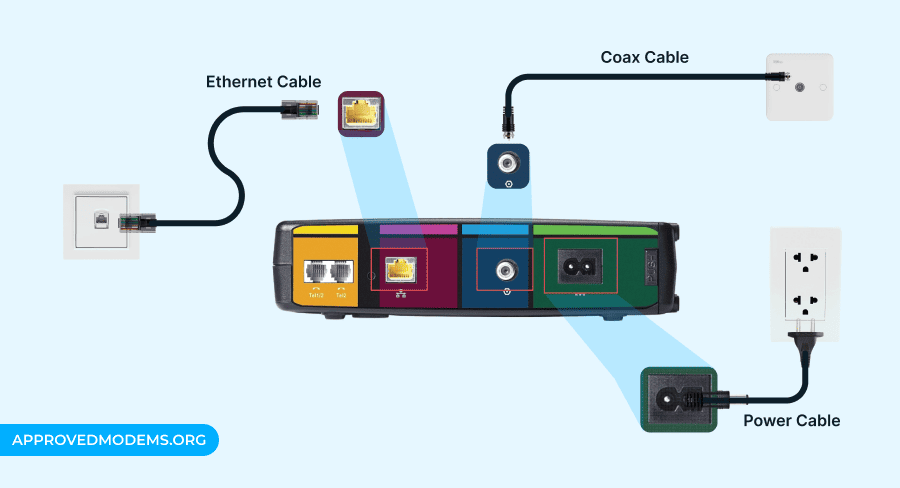
Loose or damaged cables are one of the most common reasons why US/DS light flashes. These can be hypersensitive, and even the slightest nudges can break them down, resulting in weak or no connections.
- Check if all cables are securely fit. You can unplug and re-plug to ensure the same.
- Then, inspect each of them thoroughly for any visible damage. Also, check the coaxial splitters for any potential damage.
- In case you find any damage, replace it with a new one and fit it securely.
- Not only that, often damaged wall outlets can be the underlying reason, so try another outlet to check if the issue is resolved.
3. Change Router Placement
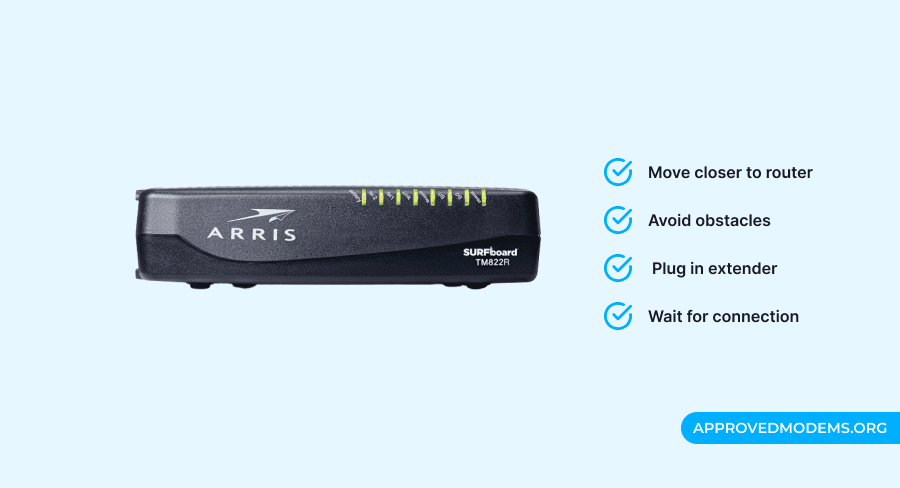
Often, incorrectly placing a WiFi router with objects, furniture, or large metal objects interfering with the signal can result in blinking lights. So, be sure to place it centrally in your home to ensure a stable and strong connection throughout the space.
Also, you must ensure a few things as follows:
- Signals from other devices like microwave ovens, cellphones, Bluetooth devices, and others interfere with router signals. So keep them away from the router.
- Keep your router in an open space, away from any obstructions like walls, metal, and other objects. It’s best to keep it on a higher ground.
- Ensure to place it at an optimal distance from the modem to ensure a seamless connection.
4. Prevent Router Overload
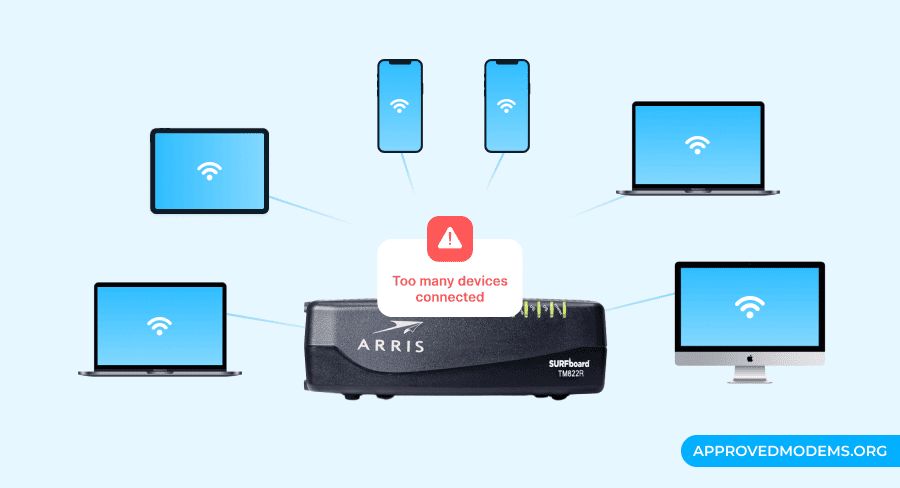
Overloading the device with too many connections or performing a plethora of tasks at a time also results in this issue. The reason might be you overestimated the capacity of your router. Many spec sheet mentions the upper limit for a device, and if you don’t find any, follow the steps below.
Also, your password might be compromised, resulting in many unknown devices accessing the device. So it’d be safe to change your password for added security.
- Open the router app or web GUI, and go to Connections > Manage connections.
- It will display the devices connected to the network. Investigate them thoroughly and if there’s any unknown device, remove & block it.
- Also, ensure to remove all devices and continue to re-connect within the limit.
5. Update the Router Firmware

Networking devices often run on outdated firmware, primarily as we forget to update it or its auto-update feature is turned off by default or not working. As a result, network inconsistencies and connection issues. To fix it,
- Connect the router to your computer/laptop via an ethernet cable.
- Access the official website of the manufacturer, and log into it by putting in the default username and password.
- Find and click on the update center and look for any available firmware updates.
- If yes, download the update and install it.
- During installation, don’t turn off the router, as this might damage it. Let it finish installing and rebooting automatically. It takes around 15-20 minutes to complete.
- The US/DS light should stop blinking. If not, proceed to the next step.
6. Test a Wired Connection
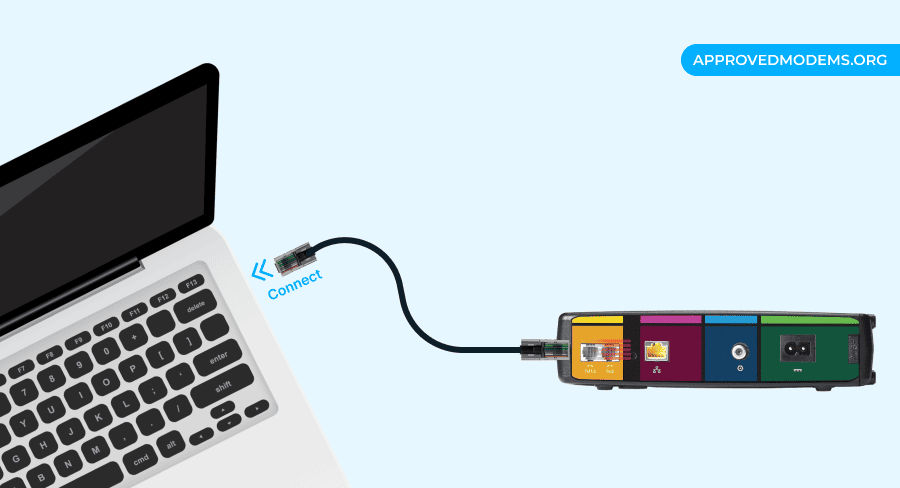
Testing a wired connection pinpoints whether the problem is in your networking device or ISP. The process hardly takes a few minutes, and here’s what to do:
- Establish a wired connection between your router and the smart device.
- Check if the corresponding LAN lights turn on.
- Then, ensure that the internet connection is working properly by downloading a file or running a speed test.
- If the internet works in wired mode, either your gateway is set to bridge mode or its WiFi function has stopped working.
7. Perform a Factory Reset
If you are still facing trouble with connectivity and wondering why your device is not connecting to the internet, you are left with the router reset.
Look for a pinhole labeled reset. Insert a pin and hold it for a bit over 5 seconds. You’ll see all the lights flash, and the device will return to its factory default settings. Your device will restart and wait until the connections are established.
8. Contact Customer Support
If none of the solutions works in your case, you might be dealing with a bad device. Slow, sluggish, and even no internet access are potential signs of dated equipment. Your last resort is to contact the service provider and ask for a replacement.
And if you can invest, a better resolution is to replace your rented equipment with third-party ones. Check out ISP-compatible modems and WiFi routers.
Frequently Asked Questions
How long does it take for a gateway to establish a connection?
It should take no longer than 5 minutes to connect to the service provider’s network. If it’s taking longer, there may be an issue with upstream or downstream channels.
What to do if the US/DS lights are off?
Check all the wires and cables connected to the internet equipment. Ensure the power cables are plugged in properly and there are no power fluctuations. Make sure the coaxial cables are screwed in tight at both ends.
I hope this guide has helped you resolve your connectivity issues!
